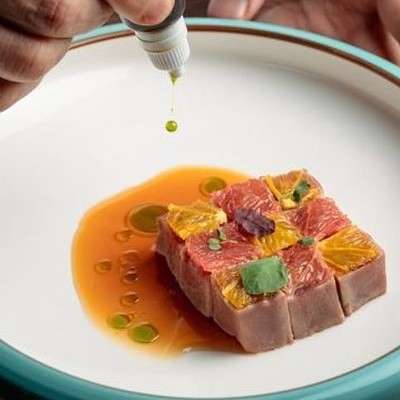It was the Corn 'N Oil that did me in. I'd been planning a post on mixing techniques for a while, and had a pretty good handle on what I wanted to say. Then, I built a Corn 'N Oil. Neither stirred nor shaken, yet (depending on version and interpretation) bearing some of the telltale indicators for each method, it threw my thinking a curve-ball, albeit a delicious one.
On a certain level, it might seem that the question of whether to shake a cocktail, stir it or build it in the drinking vessel is largely one of pedantry. To a certain extent, that's true. In fact, the pedantic nature of the question is further muddied according to whose pedantry, exactly, you're referencing. No less a mixological light (sorry for that) as David Wondrich even suggests that a Manhattan, a classically stirred cocktail if ever there was one, may be shaken. While that flies in the face of what I've come to know as the general consensus on mixing technique, it is no less delicious for its perceived transgressions.
At this point, it's probably a good idea to pull back a bit. I can hear you asking, "If it's all pointless hairsplitting, why are we even having this discussion?" That's just the thing: While there are certainly differing opinions and exceptions to the rule, there are nonetheless rules (generally), formed over time and with experience, designed to deliver the best possible experience for a given cocktail. In a moment of need, I've been known to slop some gin and vermouth over ice, calling it a Martini and a day. When I really want to enjoy a Martini, though, I do it the right way.
For a long time, I adhered to the simple, and generally correct, principle of ingredients. If a drink contained citrus, eggs, or cream -- anything of a significantly different consistency from alcohol -- it needed shaking, while booze-only drinks were stirred. That's still my guiding principle, with a few additional twists.
Consistently, the decision to shake, stir or build comes down to a handful of experiential considerations. Ultimately, they're all going for the same goal: to combine the ingredients, to dilute them to the proper strength and to chill the finished cocktail. The shades of nuance are what distinguish the methods, and can be pretty well summed up as considerations of the same three aspects of a cocktail:
- Texture
- Temperature
- Stability
In order to tackle how each of those elements plays out in various mixing methods, I think it's easiest to discuss the purposes and merits of each of the Big Three techniques*.
Shaking:
Shaking a cocktail is about combination. As previously stated, you shake most any cocktail containing egg, cream or juice. All of these are difficult to mix with alcohol, and shaking is the only way to do it properly. The more vigorous agitation smashes things around sufficiently to (more or less) emulsify the ingredients. Where stirring would leave things a mess of clashing flavors and textures, shaking creates a harmonious drink. It is important to note that, with the exception of the flip, carbonated ingredients are never shaken with everything else, but added to the glass after straining.
Interestingly, the textural effects of shaking swing wide. Says Alex Gregg, bar manager at current darling The Pass & Provisions, "The air bubbles that are added help to produce a lighter, thinner mouthfeel that an acidic drink like a margarita needs to retain its refreshing-ness...On the topic of eggs and cream, shaking is again ensuring that they are completely integrated or emulsified, but this is where the air really comes alive in the form of a foam or meringue, which aids in a beautifully silky, or even fluffy at times, mouthfeel."
For a shaken drink, I find that until the shaker frosts is about the right amount of time, unless you're shaking cream or eggs. Then, I like to shake until I start to get sick of shaking. For something like a Ramos Gin Fizz, I tend to shake until I'm actually sick from shaking.
Stirring:
Stirring a cocktail is about all the same things as shaking, but in reverse. Kind of. With all-booze cocktails, emulsification isn't really an issue; all of the ingredients are similar enough in constitution that all that's required to combine them is a bit of stirring. If you add too much water to the mix, or the tiny bubbles that result from shaking, you thin out the texture of the resulting drink. Part of the appeal of a well-made Manhattan or Martini is, at least for me, the smooth, silken texture of the cocktail. The lower level of dilution (and chilling) allows the stouter character of a stirred cocktail to shine through, both in flavor and in texture.
Also of consideration is stability. Stirred cocktails tend to be rigorous. To go with their stiffer character, they have stiffer guidelines and tighter tolerances. Once you have those tolerances established, it would be a sorry thing, indeed, to run roughshod over them via dilution or separation in the glass.
As Bobby Heugel from Anvil Bar and Refuge (and seemingly every other eating and drinking establishment in the city) told me, "With stirred drinks, there's a ratio you're trying to preserve. You don't want it to change a whole lot as you drink it." Stirring allows that. The spirits take their turn in the mixing glass, and are then deposited in front of you as they are meant to be consumed. Aside from slowly warming, there's little possibility for change in such a preparation. Try shaking a Manhattan and watching as it slowly changes in front off you. Small shards of ice on the surface of the drink continue to dilute; the spirits, which were forced temporarily to mingle more than they'd like, start to push away from each other. It's a different drink when you're done with it than it was when you started. That's rarely a good thing.
Building:
So now that I've said it's rarely a good thing for a drink to change after it's in the glass, I'm going to turn around and say exactly the opposite. At least one of the purposes of a built cocktail is the sense of dynamics that presentation brings to a drink. As noted New Orleans cocktail historian Chris McMillian said of the Julep -- among the most famous of the built cocktails -- "I like to put the sugar on afterward, à la Soule Smith, so you don't have to get to the bottom of the drink in order to get to the reward. That is, to me, one of the most compelling qualities of the Julep: Every sip is different from the first, because it's a built drink as opposed to a homogenized drink. I don't typically stir my Julep up. That means that as the sugar sinks to the bottom, it's going to be much more intense in bourbon at the top, and much sweeter and more minty at the bottom. Each sip progressively takes you there and each sip is different from the one preceding it. Few drinks have that multidimensionality, building to the crescendo -- which I think is the payoff of the Julep -- of the bourbon and the mint together." Such is the case with most built cocktails.
"Building is whatever you pour into your mixing glass," admonished bar and restaurant consultant Eoghan Dillman, whose recent pop-up speakeasies and dinner series are a run-up to the 2013 opening of his "low-alcohol beverage lab and Re-Evolution of Urban Dining supper club," going on to agree that the term has become shorthand for a drink built in the vessel in which it is to be served. "Mostly," says Dillman, "building in the glass is about tradition, laziness and ease." For certain drinks, says Dillman, "it just makes sense to do that instead of shaking."
"Built drinks are simpler," agrees Heugel. "Specifically with the Corn 'N Oil" (the drink whose construction had first thrown me), it's just a more casual drink. It's so rum forward and, culturally, rum is a more casual spirit, so it makes sense to do it as a build."
To take all of that a step further, it's worthwhile to notice that most "built" drinks are highballs, a category of drink typically consisting of a spirit and a mixer combined over crushed ice. They're meant for leisurely consumption, thus the crushed ice in the glass, which helps to keep the drink chilled for much longer. Over their life in the glass, these drinks change. While that is part of the experience, you want to control that change. Says Heugel, "Take the Julep. While we might briefly stir it before building it on top of crushed ice, we would never stir it fully, like a stirred cocktail. Since it's served over crushed ice, there's no need. The crushed ice, with its greater surface area, will dilute the drink as it's made and consumed, so a build is sufficient. If you stirred and then built, it would dilute too much."
Since we went pretty far down the rabbit hole, I think a bit of a recap is in order, so here goes:
Shake a drink when it contains cream, egg, juice or any other non-spirit ingredient. This will help you combine the ingredients and achieve proper texture.
Stir a drink if it's all booze and you want to control the experience of the drink tightly. The gentle combination will allow the spirits to more fully express themselves, and, along with the subsequent straining, will help keep the finished drink in its intended state.
Build a drink when you want it to be a leisurely, slowly sipped drink and you're okay with it changing over time. Or if you're just making a classic highball. Very little good will come of shaking a Scotch and Soda, except maybe a bit of a show and a lot of mess.
There are, of course, reasons to deviate from these guidelines, and they certainly don't constitute the only techniques for combining drinks. I can think of instances in which you might stir or shake instead of build, and many stirred drinks would be perfectly fine shaken or built in the glass. Slimmer is the list of shaken drinks that would work any other way. I don't even want to think about a Ramos Gin Fizz built in a glass -- straight orange flower water bumping up against a wholly intact egg, with floaters of gin and juice.
*No disrespect to Swizzling and other arcane methods of mixing drinks.
Follow Eating Our Words on Facebook and on Twitter @EatingOurWords






